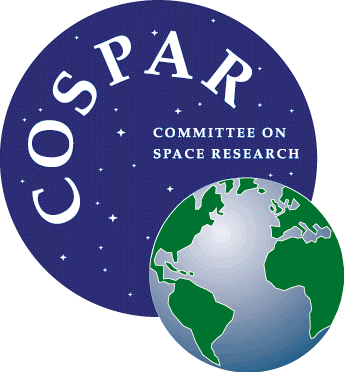COSPAR Panel for Radiation Belt Environment Modeling (PRBEM)
The Panel was established to develop a standard model of the Earth’s trapped radiation belts. The model should be based on experimental data using all available space data sources, while theoretical considerations will serve to guarantee optimal model construction and use, and internal consistency. The functionality of the model should be defined in terms of the needs of the user community. Guidelines should be defined for developing standardized radiation monitors. Where discrepancies exist between different data sources, the PRBEM should promote critical discussion to establish the quality of the data sets. The model should be updated as new data become available and as old data bases are fully evaluated and exploited. A liaison should be established and maintained with the international scientific and space engineering communities, such as the IACG and ISO TC20/SC14/WG14, in order to ensure the availability and usability of data and models for radiation belt modeling and to encourage the sharing of modeling expertise.
Chair:
- Yoshi Miyoshi (Japan), 2021 – 2024 (miyoshi – at – isee.nagoya-u.ac.jp)
Vice-Chairs:
- Brunet, A. (France), 2021 – 2024 (antoine.brunet - at - onera.fr)
- Shprits, Y. (Germany/USA), 2022 – 2026 (yshprits – at – gfz-potsdam.de)
- Zheng, Y. (USA), 2022 – 2026 (yihua.zheng - at - nasa.gov)
Intercommission/Panel Liaisons:
- Scientific Commission C: O’Brien, P. (USA), 2018 – 2024
- Sub-Commission D3: Shprits, Y. (Germany/USA), 2018 – 2024
- Panel on Space Weather: Jiggens, P. (ESA/ESTEC), 2018 – 2024
- Task Group on Establishing a Constellation of Small Satellites: Yoshi Miyoshi (Japan), 2023 - 2024
News
-
IRBEM Now Has a DOI
The PRBEM/IRBEM team is pleased to announce that the IRBEM library now has a DOI (https://doi.org/10.5281/zenodo.6867552) that can be used to cite/acknowledge the use of the library in publications and presentations.
Please refer to the IRBEM README file for the appropriate acknowledgment format, and to this GitHub issue for a community discussion on this topic.
-
PRBEM Business Meeting at COSPAR 2022
An in-person PRBEM Business Meeting will be held during the upcoming COSPAR 2022 44th Scientific Assembly. As usual, we will renew some of the panel vice chair positions that have come to end this year, and discuss the sessions topics and organizers for the COSPAR 2024 Scientific Assembly in Busan.
The meeting is scheduled on Tuesday, 19 July 2022 from 13:00 to 14:00 (EET). It will take place in room N. Skalkotas.
-
COSPAR 2022 at Athens
The next PRBEM sessions for the COSPAR 2022 44th Scientific Assembly have been planned. The assembly will take place 16-24 July 2022 at Athens, Greece.
- PRBEM.1 : EMPIRICAL AND NUMERICAL MODELS OF THE NEAR-EARTH RADIATION ENVIRONMENT
- Main Scientific Organizer : Yihua Zheng
- Deputy Organizer : Yuri Shprits
- The near-Earth radiation environment includes electrons and protons that can harm technological systems and astronauts. Our community describes these environments through numerical simulations and empirical methods, using local, regional, and global models to inform the planning, design, and testing of space systems and technology. We also engage in verification and validation efforts to compare models to each other, to environment observations, and to radiation effects observations. We welcome contributions that describe model results, modeling techniques, model status updates, and model validations. We are interested in all models with a climatological application: long term simulations, global numerical simulations, data assimilation models, machine learning models, and statistical models.
- PRBEM.2 : RADIATION BELT MISSIONS, DATA SETS, DATA PROCESSING, AND INTERCALIBRATION
- Main Scientific Organizer : Ingmar Sandberg
- Deputy Organizer : Seth Claudepierre
- The lifeblood of radiation belt studies is observations. Following the flagship Van Allen Probes and Arase missions, the primary source of radiation belt measurements in solar cycle 25 is expected to come from dedicated experiments onboard upcoming CubeSat missions, and from numerous radiation monitors as hosted payloads. Understanding a mission’s sensors and the nature of its orbit and operation are required for the optimal use of its data. Moreover, the intercalibration of multiple datasets is essential for scientific analyses and the construction of consensus radiation belt models based on combined observations. Lessons learned and data processing best practices facilitate efficient and optimal extraction of value from scarce data. In this session, we invite presentations on these topics as they relate to recent, active, and upcoming missions that will make observations of the radiation belts, along with the methods and tools used for the processing and analysis of these datasets.
- PRBEM.3 : EXTENDING THE PREDICTION HORIZON OF EARTH’S RADIATION BELTS: FROM SCIENCE TO END-USERS SPACE WEATHER SERVICES
- Main Scientific Organizer : Ioannis A. Daglis
- Deputy Organizer : Antoine Brunet
- Relativistic electrons and protons in geospace form the Van Allen radiation belts, and pose a major space weather threat to spacecraft operations and functionality. Their emergence and loss are largely influenced by plasma waves of various frequencies trough wave-particle interactions. Understanding these processes and linking their occurrence and intensities with dynamical solar structures and interplanetary transients in sufficient detail is a key point to produce a more accurate and reliable forecasting of the potentially disruptive emergence of relativistic electrons and protons. This session invites relevant studies using in-situ and ground based observations, physics-based models, machine learning and/or numerical simulations.
-
Migration notice
We have decided to migrate IRBEM to github. We believe this will allow the community to best be involved in the development of the library.
The IRBEM project is an international effort, and welcomes any contribution. Please raise any issue (bug reports, usage questions, feature requests, …) on our github Issues page. See directly on the IRBEM project page for more information on how to get involved.
The IRBEM-extras project will contain the developer-contributed packages that were previously hosted on Sourceforge alongside the library.
subscribe via RSS
